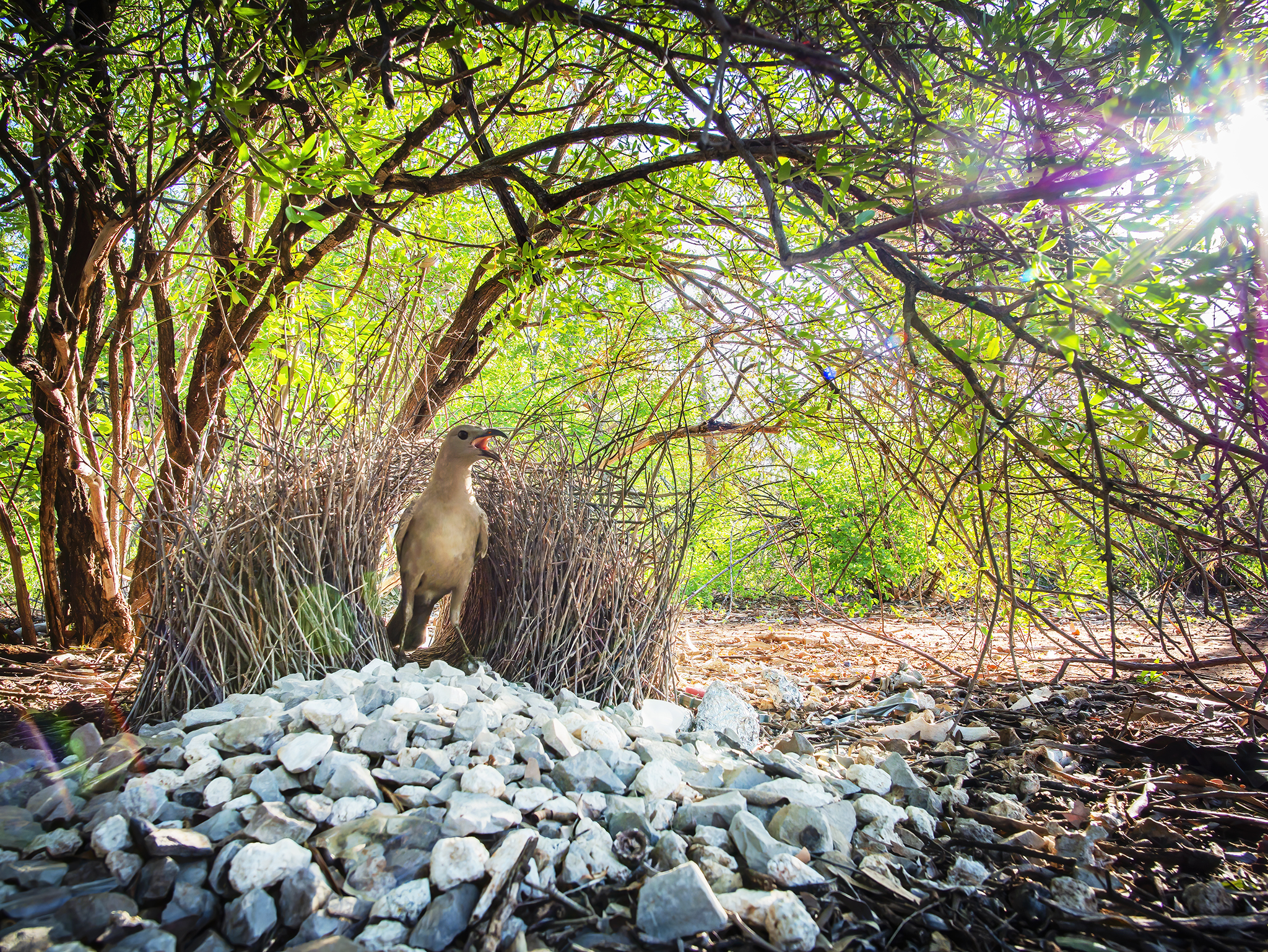Say hello to one of Australia’s most impressive avian architects – the Bowerbird.
Photographed in his bower at Queensland’s Boodjamulla National Park, this particular bird is the Great Bowerbird – the largest of the ten species of Bowerbird found in Australia. Great Bowerbirds are located right across the Top End and are known for their remarkably intricate bachelor pads and impressive mating displays.
Interestingly, despite the male spending an extraordinary amount of time in it, it’s not accurate to refer to the bower as a nest, as it isn’t a place where Bowerbirds lay their eggs or raise their young. No, the bower is nothing but an extravagant display designed to dazzle a female.
However, female Bowerbirds aren’t easy to impress – and they certainly know how to put a male through his paces!
Presenting: An Hour in the Bower!
This timelapse is designed to demonstrate just how much time and effort a male Bowerbird puts into his bower. Aside from eating and sleeping, the remainder of the male’s time is almost entirely dedicated to his magnificent creation.
As a juvenile, the male visits other bowers and practices his building skills before constructing his own. Once the groundwork has been laid, his bower turns into an avian Sagrada Familia – it will never be finished. He spends his days constantly collecting new ornaments, making minor tweaks and improvements, and defending his masterpiece from sabotage by rival males (I don’t think Gaudí had to worry about that last one).

Each species of Bowerbird has its own unique preferences for the objects that must surround their bower. For the Great Bowerbird, it’s a plethora of white and silver, a hint of green, and – if he can track some down – a few pieces of clear glass in the centre of the bower is the icing on the cake. He’ll also need at least one brightly coloured object to hold while he performs his mating display (likely the red ring in the image above). One of the rangers at the park informed us that the white pebbles of freshly laid gravel are very popular; while white plastic bottle caps, pieces of aluminium foil and stainless steel scourers are eagerly snatched up if nearby campers turn their backs.
Male Bowerbirds spend almost their entire lives obsessing over a creation that they hope will attract a female. But what happens once an attractive lady Bowerbird finally decides to stop by?

If you were paying close attention to the timelapse above, you would have noticed this adorable Agile Wallaby hopping around in the background. However, this isn’t the kind of visitor the male Bowerbird is trying to get the attention of. He, of course, wants a female.
Enticing a female to look at his masterpiece, however, is only the first step in the process. After arriving and upon successful inspection of his bower, the female sits down to watch his performance. This is the moment he’s been waiting for. The male picks up his most colourful object and begins a carefully choreographed dance.
The dance centres around showing off a small patch of vibrant purple feathers located on the back of his neck – lady Bowerbirds can’t get enough of these feathers. The peak time for Bowerbird mating displays is usually first thing in the morning and, incredibly, males will orient their bowers north-south and perform at the north end of their bower, in order to maximise the sunlight reflecting off that magical patch of feathers.
Research has demonstrated that males even alter their displays according to the reactions of females, ramping up or toning down the intensity as required.

You can think of the male’s bower and his intricate courtship performance as his dating app profile picture and bio. However, there’s no doubt that Bowerbird dating methods are much more Bumble than Tinder.
Females searching for a mate will visit numerous males, first rejecting those whose bowers aren’t up to scratch, and then carefully watching the mating displays of those that remain. Often, she’ll re-visit multiple bowers, making the top contenders perform several times before finally selecting a winner.
After the competition is over, she no longer wants anything to do with the male. She builds her own nest and independently raises her young, while the male returns to manscaping his bower and rehearsing his dance moves in preparation for next year’s breeding season.
Bowerbirds have one of the most sophisticated mating rituals in the animal kingdom, and are one of Australia’s most remarkable native animals.
–
Great Bowerbird (Chlamydera nuchalis), Boodjamulla National Park, Australia


